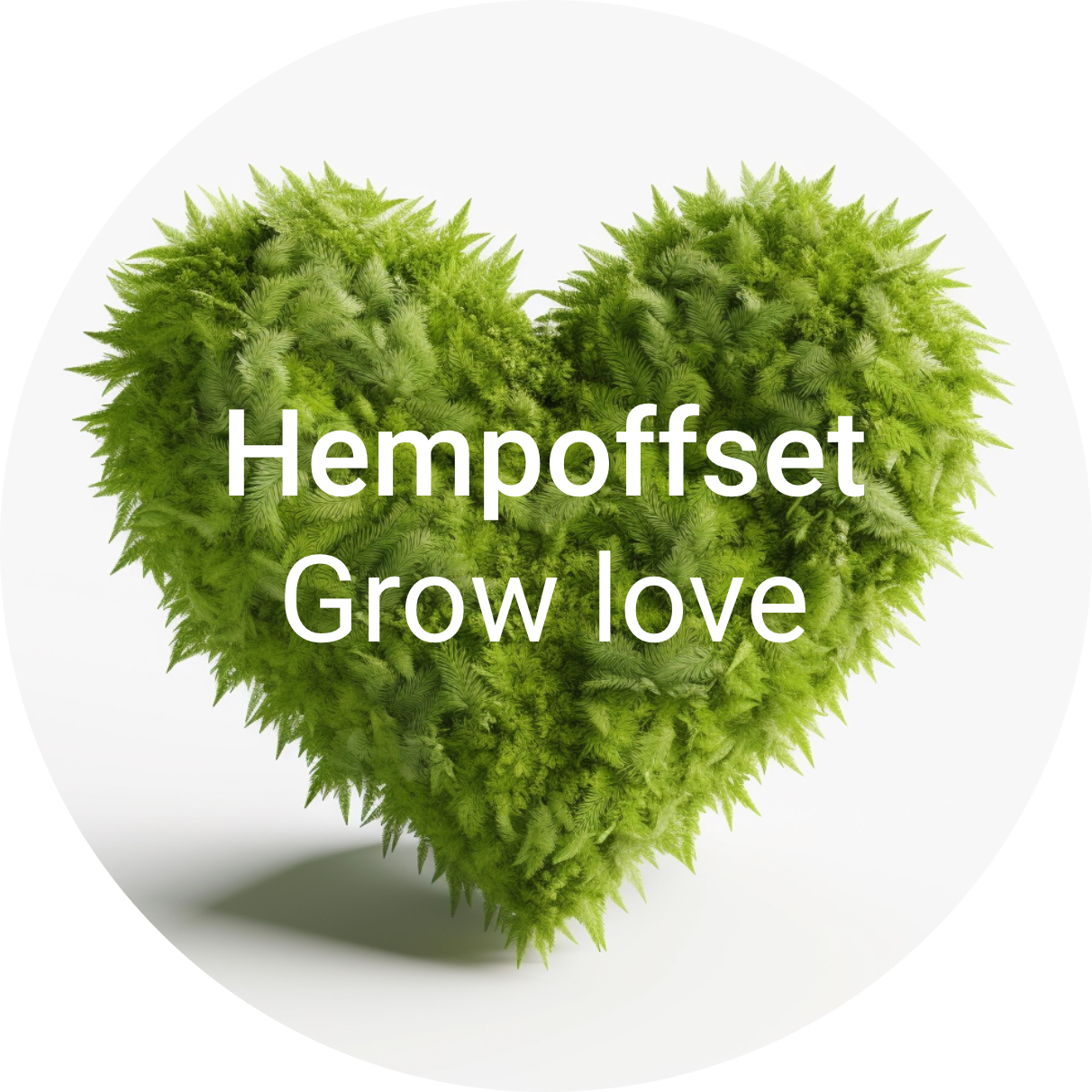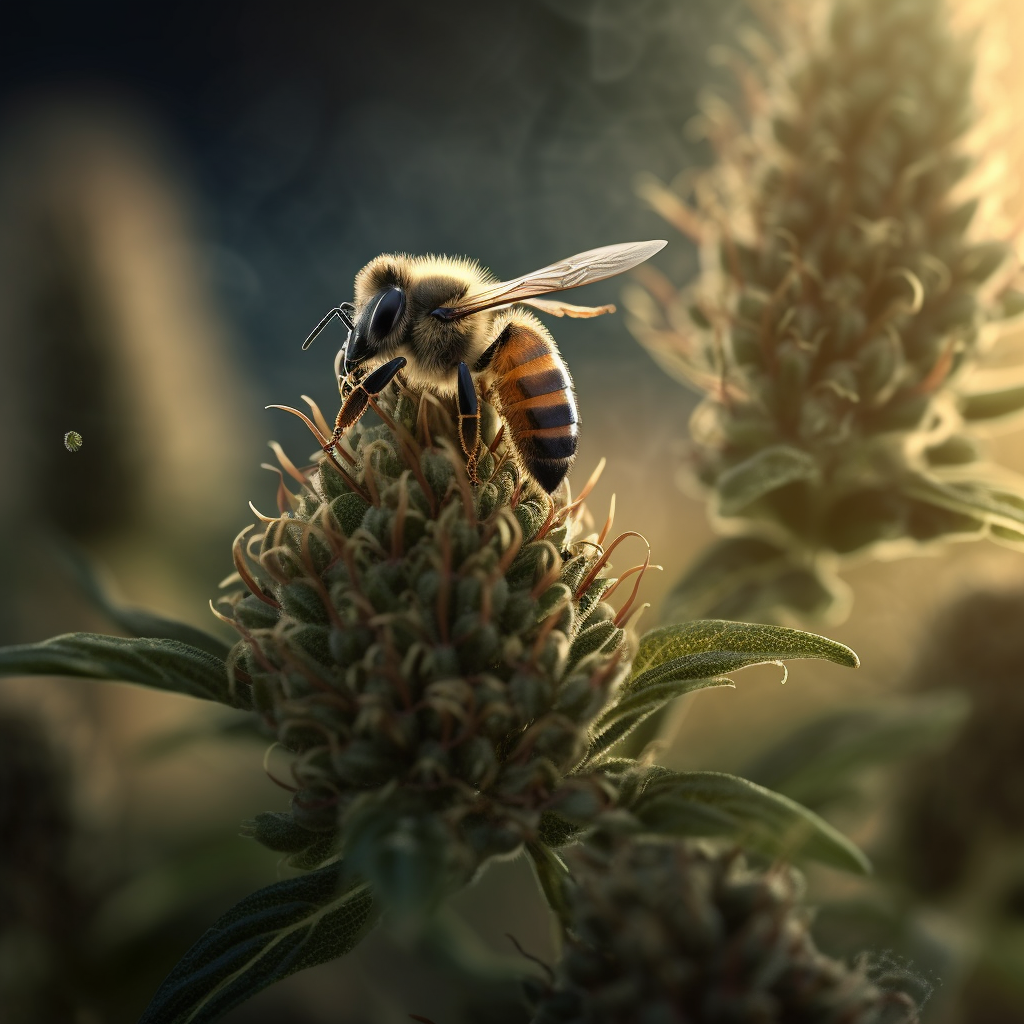How this amazing plant can save the world
The thing about the industrial hemp plant is that it is so versatile. There’s a lot of confusion around hemp, cannabis, the uses of these plants, carbon offset, and the plant’s potential impact on climate change. So we’ve put this handy guide together for you. Enjoy and share! If you want to partner with us by growing hemp and/or making with hemp, just fill out this form.
Jump down to our Hemp Hub
Our Hemp Hub has links to lots of useful resources. Jump down now.
About hemp
Hemp is a plant that has been cultivated by humans for over 10,000 years for its useful fibre (think paper, fabric, rope, sails); and also for its oils, which can be used for food and in moisturisers; and for its CBD, which is undergoing multiple clinical trials on its medical potential; and for its conversion to fuel by fermentation (think ethanol). You can also make hemp beer by fermentation, it’s up to you. Hemp can even be used to make sustainable plastic. In 1941, Henry Ford unveiled a car made almost entirely of hemp, which ran on hemp fuel. Hemp can claim to be the most versatile and useful plant in the world. There’s even hempcrete, a much more sustainable building material.
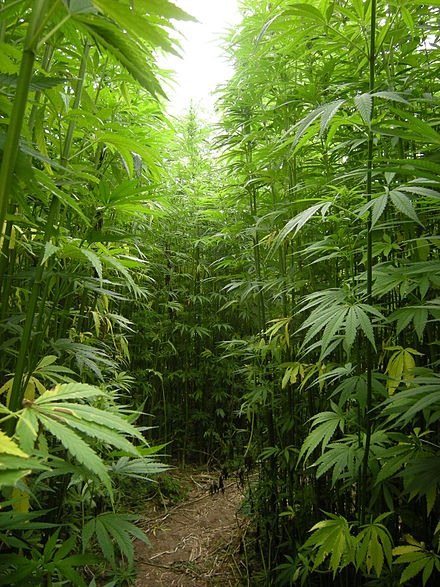
What does the hemp plant look like?
It’s very green, tall and bushy, very fast-growing, with elegant leaves you’ve probably seen on a million pop culture designs. Wikipedia answers it best, and with a picture (above): Hemp, or industrial hemp, is a variety of the Cannabis sativa plant species that is grown specifically for industrial use. It can be used to make a wide range of products. Along with bamboo, hemp is one of the fastest-growing plants on Earth. It was also one of the first plants to be spun into usable fibre 50,000 years ago (we’re claiming 10,000 years ago). It can be refined into a variety of commercial items, including paper, rope, textiles, clothing, biodegradable plastics, paint, insulation, biofuel, food, and animal feed.
How can hemp help stop climate change?
Hemp is a fast-growing, highly fibrous plant. This means that it absorbs lots of CO2, carbon dioxide, from the air as it grows. Different varieties will absorb different amounts of CO2. Varieties grown for seed will sequester around 6 tons of CO2 per acre in a single growing season. High-fibre varieties will sequester around 10 tons of CO2 per acre in a single growing season. In hot countries, three crops per year are possible. When you consider that forestry can take up to 30-40 years to show net carbon benefit, we believe that hemp literally has the power to save the world.
Hemp is a versatile and sustainable crop that can play an important role in mitigating climate change by capturing and storing carbon dioxide (CO2) through the process of photosynthesis. The carbon journey across the hemp lifecycle starts with the growth of the hemp plant and continues through the use of hemp-derived materials in construction and infrastructure.
During photosynthesis, hemp plants absorb CO2 from the atmosphere and convert it into biomass, which is stored in the plant’s leaves, stems, and roots. This process helps to reduce the amount of CO2 in the atmosphere, which is one of the main contributors to climate change. In fact, hemp plants are known to be very efficient at capturing CO2, with some estimates suggesting that they can absorb up to four times as much CO2 as trees.
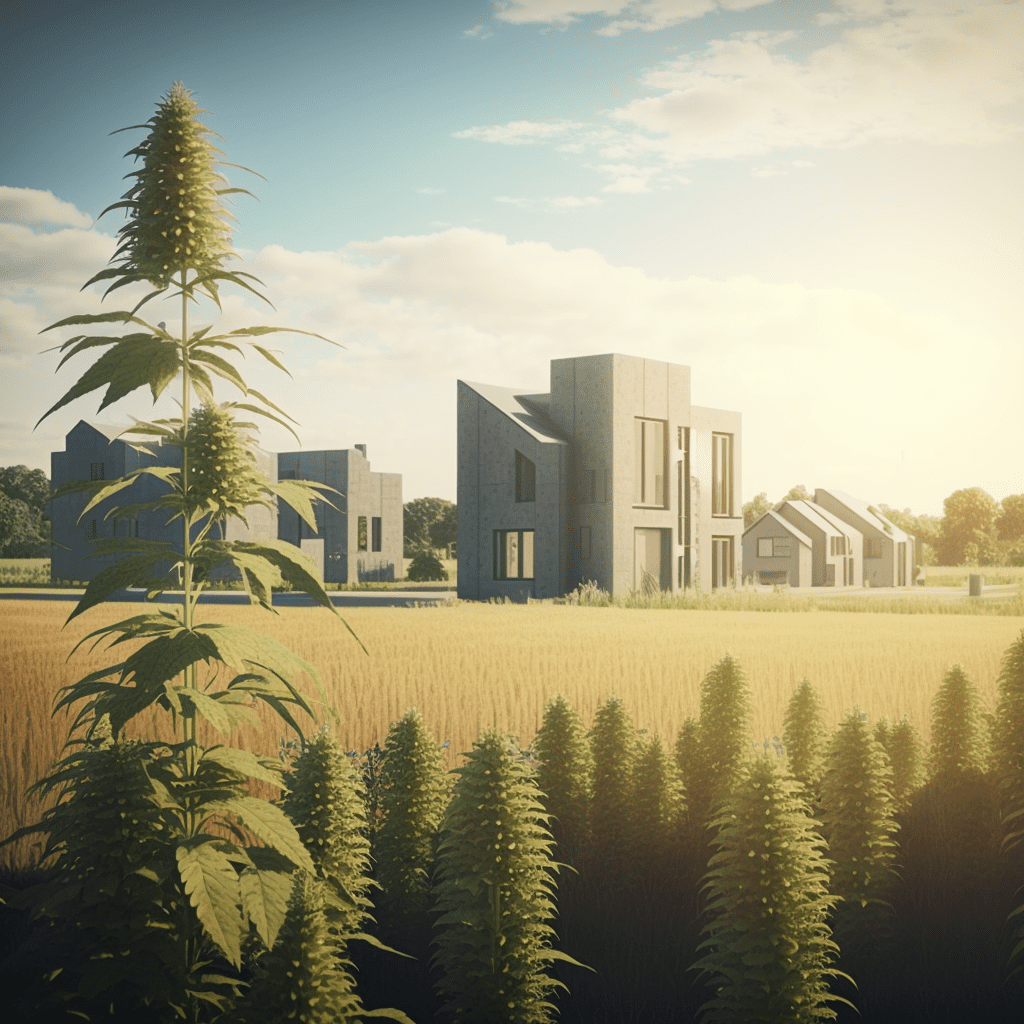
Once the hemp plant has been harvested, the carbon stored in the biomass can be used to create a wide range of products, including hempcrete. Hempcrete is a sustainable building material made from a mixture of hemp hurds (the fibrous core of the plant), lime, and water. When hempcrete is used in construction, it has the potential to lock away carbon for the long term, as the lime in the mixture reacts with carbon dioxide in the atmosphere and hardens over time.
In addition to hempcrete, hemp can also be used to create a range of other sustainable building materials, such as insulation, roofing, and flooring. These materials not only have the potential to lock away carbon, but they also have a lower carbon footprint than many traditional building materials, such as concrete and steel.
Overall, the carbon journey across the hemp lifecycle highlights the potential of this versatile crop to help mitigate climate change by capturing and storing carbon dioxide. From the growth of the plant to the use of hemp-derived materials in construction and infrastructure, nature’s power-plant has the potential to play an important role in building a more sustainable future.
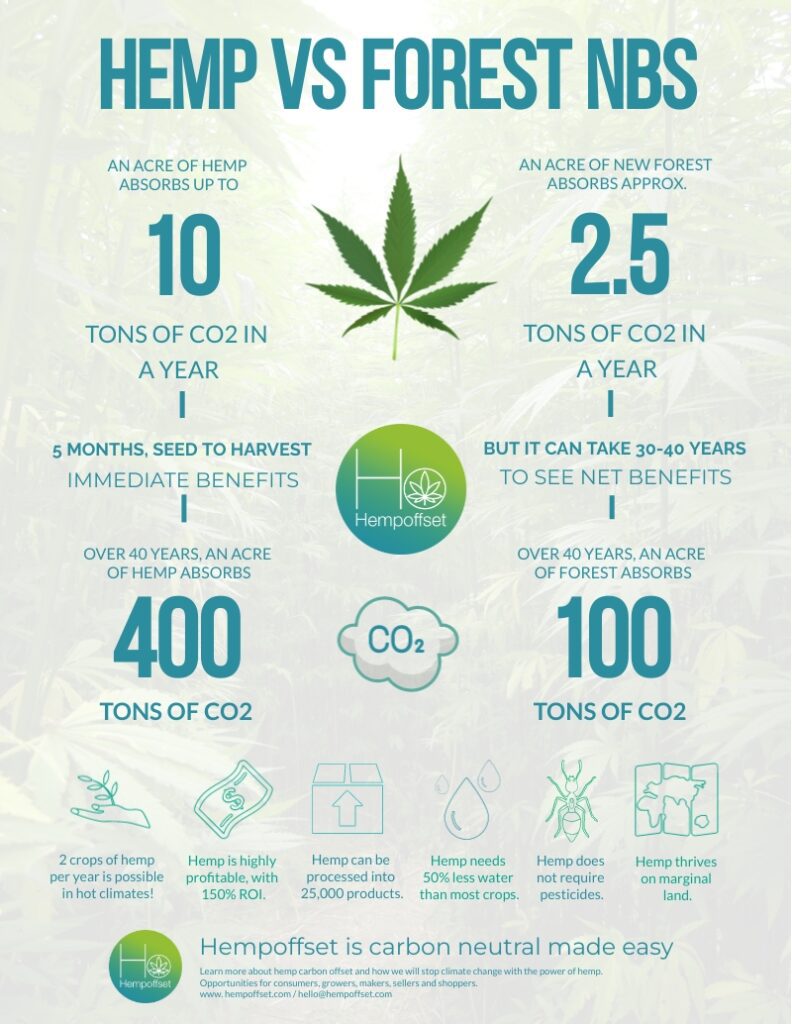
Forestry carbon credits are just greenwashing, but hemp is the answer
In the face of increasing environmental concerns, businesses and individuals are actively seeking ways to reduce their carbon footprint. Carbon credits have emerged as a popular solution for offsetting emissions, with forestry carbon credits often touted as a green option. However, a closer examination reveals that Hemp Carbon Credits offer a superior and more sustainable alternative, while exposing the greenwashing tactics associated with forestry carbon credits.
- Hemp is a Regenerative Carbon Sink: Hemp, a versatile and fast-growing plant, has been recognised as a powerful tool in the fight against climate change. Unlike forestry, hemp can be cultivated and harvested within a single growing season, allowing for multiple harvests per year. Furthermore, hemp has a high carbon sequestration capacity, absorbing more CO2 from the atmosphere compared to traditional forests. This makes hemp an excellent candidate for carbon credit programmes, as it actively reduces greenhouse gas levels.
- Forestry Carbon Credits and Greenwashing: While forestry carbon credits have been marketed as a sustainable solution, there are inherent issues that have led to accusations of greenwashing. One major concern is the lack of transparency and accountability in measuring carbon offsets. It is often difficult to accurately quantify the carbon sequestration of forests and the long-term impact of reforestation projects. Additionally, there have been cases where the same forested area is sold to multiple buyers, resulting in double-counting and undermining the integrity of carbon credit systems.
- Hemp Carbon Credits Offer Transparency and Accountability: Hemp carbon credits offer a refreshing alternative by providing greater transparency and accountability. Hemp cultivation can be accurately measured and quantified, ensuring the credibility of carbon offset calculations. With clear and concise methodologies, businesses and individuals can have confidence in the effectiveness of their carbon offset initiatives, eliminating any concerns of greenwashing.
- Environmental Benefits of Hemp: Hemp cultivation goes beyond carbon sequestration and offers numerous environmental benefits. Hemp requires minimal water compared to traditional crops, reducing the strain on water resources. It also requires fewer pesticides and herbicides, leading to less chemical runoff and water pollution. Furthermore, the crop can be used to produce a wide range of sustainable products, including biodegradable plastics, textiles, and construction materials, contributing to a circular and low-carbon economy.
- Economic Opportunities and Social Impact: Investing in hemp carbon credits not only has environmental benefits but also provides economic opportunities and social impact. Hemp cultivation creates jobs and supports local communities, particularly in regions where traditional industries may be declining. By promoting hemp-based industries, we can foster sustainable economic growth while simultaneously reducing our carbon footprint.
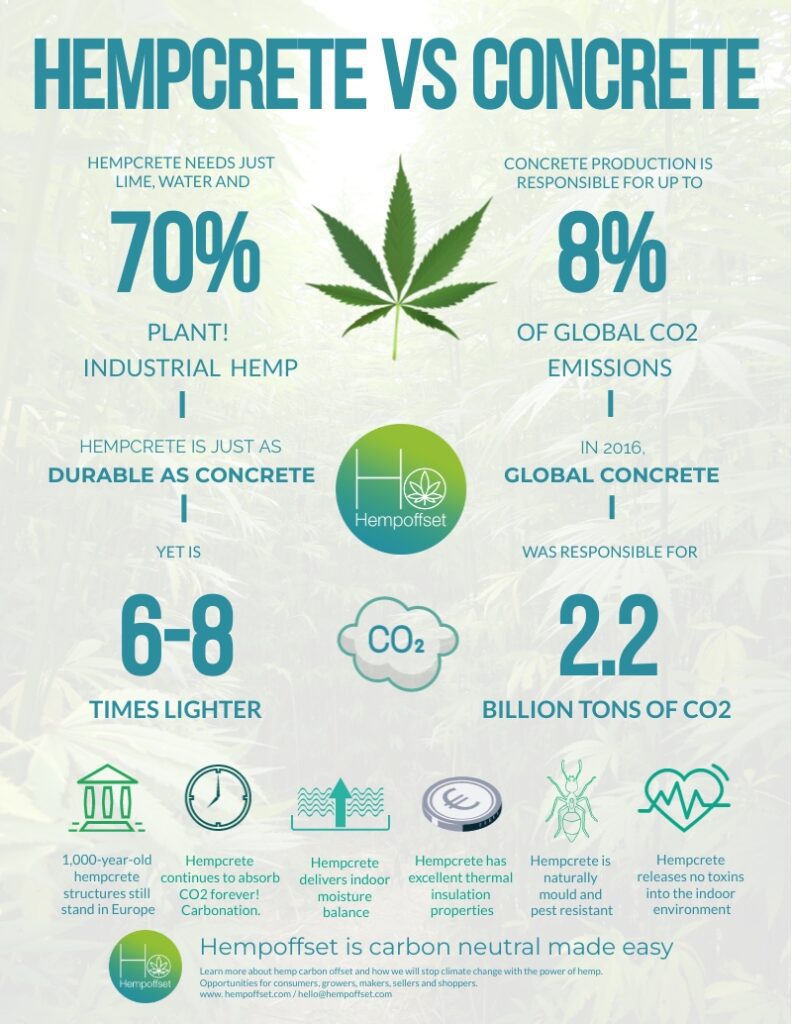
We offer a sustainable future for all humankind
In a world grappling with pressing environmental challenges, the versatile and resilient hemp plant emerges as a beacon of hope. With its multitude of applications, this plant has the potential to revolutionise various industries and foster a sustainable future for all humankind. From environmental benefits to economic opportunities, hemp holds the key to addressing some of the most pressing global issues we face today.
- Environmental Sustainability: Hemp is a remarkable plant that thrives without the need for excessive water, pesticides, or herbicides. Compared to other crops, it requires significantly less water to grow, making it an excellent choice for regions facing water scarcity. Additionally, hemp has a natural resistance to pests and diseases, reducing the need for harmful chemicals. By cultivating hemp, we can reduce the strain on precious natural resources and minimize pollution, leading to a healthier and more sustainable environment.
- Carbon Sequestration and Climate Change Mitigation: As an exceptional carbon sink, hemp plays a crucial role in mitigating climate change. Through photosynthesis, hemp absorbs carbon dioxide (CO2) from the atmosphere and stores it in its biomass. In fact, hemp can sequester more CO2 per hectare than most other crops and even certain forests. By promoting widespread hemp cultivation, we can significantly reduce greenhouse gas emissions and combat the alarming rise in global CO2 levels.
- Versatile Applications: Hemp boasts a wide range of applications across various industries, offering sustainable alternatives to conventional materials. Hemp fibres can be used to produce textiles, ropes, and biodegradable plastics, reducing our reliance on environmentally damaging synthetic materials. The construction industry can benefit from hemp-based materials such as hempcrete, which are not only durable but also have excellent insulating properties. Furthermore, hemp seeds are a nutritious food source, packed with essential fatty acids and proteins, providing a sustainable solution to global food security.
- Economic Opportunities and Job Creation: The hemp industry presents immense economic opportunities, driving job creation and supporting local communities. From cultivation and processing to manufacturing and distribution, the entire value chain of hemp production can generate employment across various sectors. By investing in the hemp industry, we can stimulate economic growth, particularly in regions where traditional industries may be in decline. This empowers individuals and communities, fostering a more equitable and prosperous society.
- Sustainable Agriculture and Biodiversity Conservation: Hemp cultivation promotes sustainable agricultural practices and biodiversity conservation. Unlike conventional farming methods that deplete the soil, hemp has a beneficial effect on soil health. Its deep taproots help prevent erosion and improve soil structure, making it an excellent rotational crop. Moreover, hemp cultivation requires minimal synthetic fertilisers and pesticides, minimising the negative impact on ecosystems and preserving biodiversity.
- Legal and Regulatory Changes: In recent years, there has been a growing recognition of the potential of hemp, leading to changes in legislation and regulations. Many countries are legalising hemp cultivation and processing, unlocking its potential for widespread use. These changes facilitate research, innovation, and investment in the hemp industry, enabling it to flourish and drive positive change on a global scale.
Hemp offers a better future for all humankind by addressing critical environmental, economic, and social challenges. Through its sustainable cultivation, versatile applications, and positive impact on various industries, hemp can pave the way towards a more sustainable and equitable world. Embracing hemp as a renewable resource holds the promise of creating a brighter future for ourselves and future generations, where the well-being of both people and the planet are prioritised.
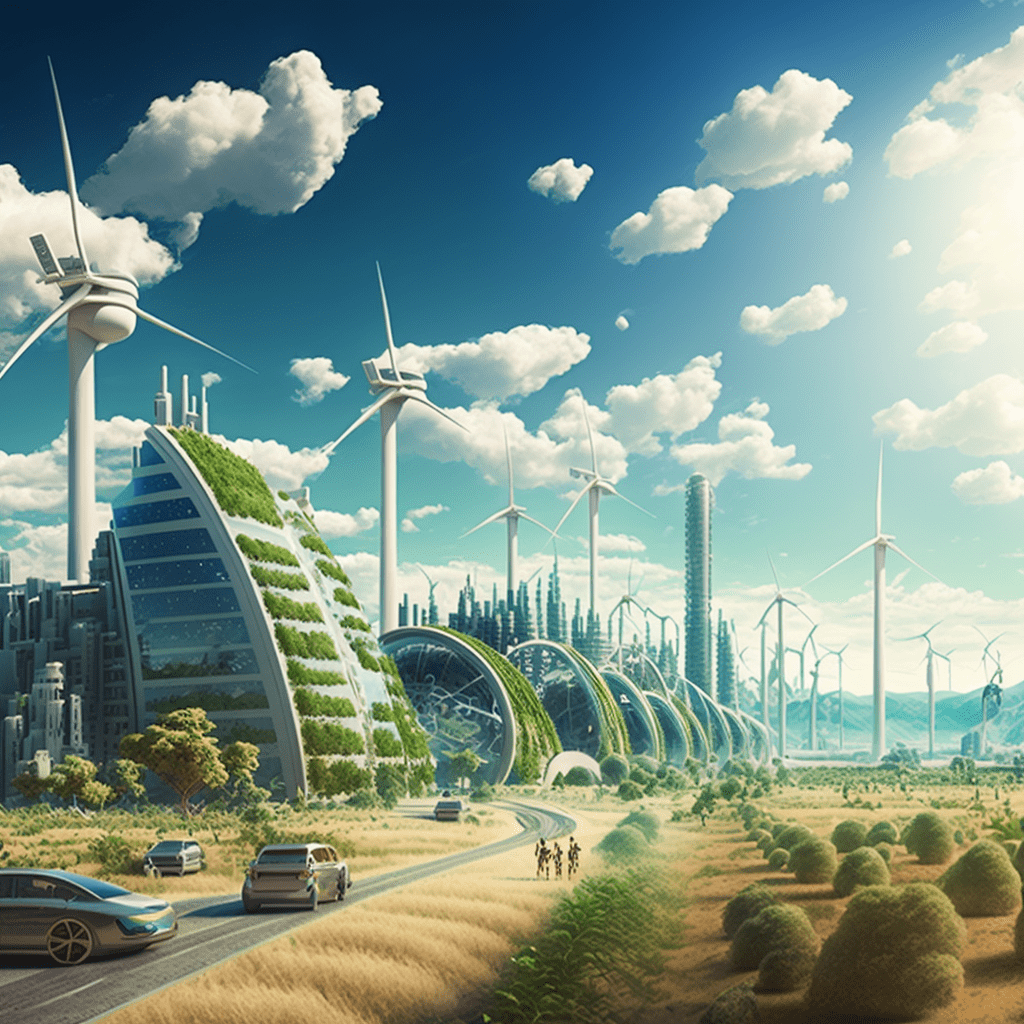

Hemp resource guide
Hemp Manifesto
Hempcrete
Hemp Carbon Credits
Humans and hemp
UN hemp report
Learn more
Our post: A Brief History of Hemp.
Wikipedia: https://en.wikipedia.org/wiki/Hemp
Image credit: A field in Brittany, France (Europe’s largest hemp producer) – Wikipedia Commons.
Subscribe to The Way, our amazing, free newsletter.
Latest posts
- We’re in the XPRIZE Top 100 in the World
- Earth Day 2024: Planet vs. Plastics
- Tao Climate Urges UN Commission on Narcotic Drugs to Exclude Industrial Hemp from Narcotics Conventions
- Our Double Impact Pledge for 2030: Sequester 1 Gigatonne of Carbon in Hemp Housing for 300 Million People
- Hemp Finalist Entry in Elon Musk’s XPRIZE
